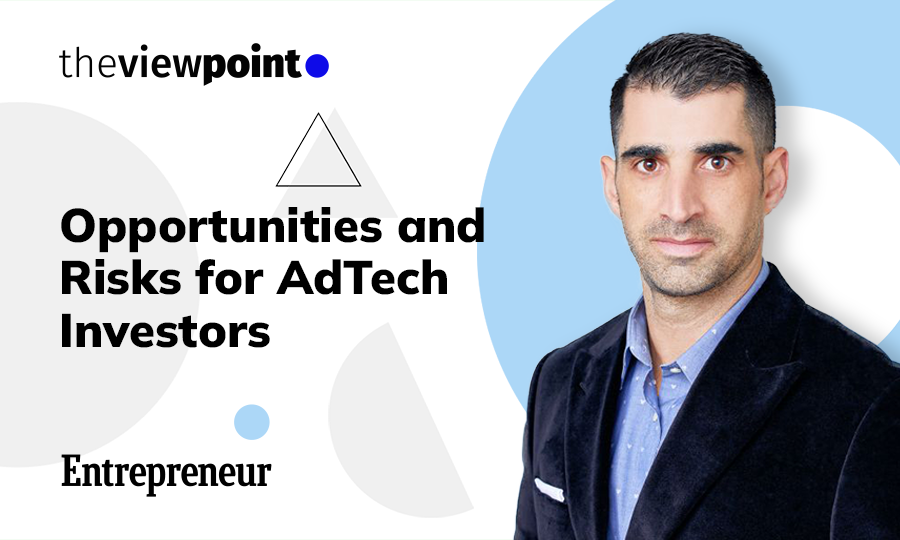
Opportunities and Risks for AdTech Investors
A SPAC (Special-Purpose Acquisition Company), which can also be termed as a “shell” or “blank check company”, is included in stock exchanges with the aim of gaining investment by means of public offers with the further confluence with an existing private company. Such entities are administered by the SEC (Securities and Exchange Commission in the United States).
As a rule, a SPAC must grab capital and acquire this or that company within 24 months. After that period, investors will get their funds back. Such entities exist in order to make it easier for nongovernment enterprises to attract investment, with minimum time and effort, so the process of Initial Public Offering listing can be dismissed.
SPACs appeared in the 1990s and gained popularity in 2020 when investors had a stake in them. More than $13 billion were accumulated in 2019 but in 2020 this number increased to $83.3 billion involving over 50% of US entities that were officially listed on the stock exchange. During Q1 2021, the number had risen to $96 billion, and among listed companies, there were AdTech ones that showed significant success.
Let’s dig deeper into the matter of SPAC companies and find out what advantages they possess particularly for AdTech owners and partners.
Benefits
Those businesses that choose to be included in public listings by means of SPAC take precedence over the traditional process of IPO listing.
First, the solution involving a SPAC is saving time and the whole process can be finished within several months whereas a traditional IPO requires more than one year. This is explained by the fact that there are fewer requirements to blank check companies and SPAC shares may be purchased by the public at large before a merger/acquisition. Apart from that, the process of IPO is not an easy way to go: it requires the solving of many issues concerning legal questions, marketing issues and accounting details. In addition, there’s no guarantee that the desired capital will be obtained.
Moreover, the insecurity and fragility of the market caused by the Covid-19 pandemic made many businesses go the SPAC way. It helped them to set high stock prices and be able to maximize funds as well as keep the sustainability of share value. In most cases shell companies are usually controlled by experienced investors who know the ins and outs of private equity and thus business owners don’t have to worry about the forthcoming process of acquisition or convergence. Special funds-in-trust secure public investors’ share capital till merging. If it ends with elimination, these funds divide the share capital between the public stakeholders.
Vulnerabilities
Shell companies’ investors might also face many risks. There’s no assurance that a merger will take place as expected or that it will happen at all. Some SPAC companies are missing proper control and disclosure and that may cause problems with investments, e.g. lead to fraudulent capital spend.
There are no overhead expenses like commissions or salaries for the management staff before the acquisition or confluence takes place, so the company executives and the team are not always motivated to succeed. Moreover, there is also no basis for competing interests because it’s restricted for managers to unite with any party that is in affiliation with insiders unless stockholders acknowledge such merging.
Revenues generated from SPAC companies may appear to be much lower than expected as the hype gradually decreases. According to Goldman Sachs, stocks of at least 70% of IPOs fueled by shell companies were worth less than $10 each.
Many SPAC companies tend to blend in with companies that need massive funding and have no certain financial projections. In such cases a SPAC is is the only way for them to attract capital as risks and possible speculations are rising.
AdTech
Despite the controversy surrounding SPACs, AdTech companies seem to align the hype with the advertisement industry’s growth just fine. Last year, Taboola Inc. began trading with a $2.6B valuation and merged with ION Acquisition Corp 1 – a green flag for all industry players to put their feet on new ground. Another company that successfully merged with ION Acquisition Corp 1 for $1.3B was Innovid.
In 2021, AdTech investors had more opportunities to park their money for decent returns, from the $1B AdTheorent to $11.1B ironSource SPAC deals. In total, the first quarter of 2021 has seen a $23.7B-worth investment pool for advertising and marketing companies, where 67% came from mergers and acquisitions.
In contrast to SPAC trends on a broader market, AdTech investors are satisfied with the revenue they receive as stock valuations are increasing. The reason is quite simple: programmatic keeps growing and delivering. According to the forecasts made by eMarketer, global digital ad spending will amount to nearly $650B by 2024, making it one of the fastest-growing areas of digital industries.
Unlike in other industries, there haven’t been any SPAC-related scandals in AdTech. Indeed, IronSource and Taboola had experienced some reduction in their valuation, but by the end of December 2021 the former company had fully recovered and the shares of the company were at an all-time high. Whether AdTech will have its own Nikola case remains to be seen. So far the biggest risks for reputation and share value are the ones associated with ad fraud – the activity which must be stopped before any pre-listing due diligence occurs.
As of today, SPACs remain the strongest tool for AdTech players to jump into public capital. With digital advertising, connected TV, and e-commerce establishing themselves as fixtures of “the new normal” amid the global pandemic, taking this road might be a great option to expand onto. In early 2022, we should expect to see more companies putting their SPAC plans on the table.
AdTech companies seeking additional funds might find SPAC a welcoming entry ticket to a public offering. It is true that some AdTech giants, including The Trade Desk and PubMatic have preferred IPOs, trading the extra potential cash for their privacy limitations, regulatory obligations, stricter financial controls, and so on. But not everyone is ready to take the hard road in a fast-paced world, which might still be on the brink of new lockdowns or significant regulatory changes.
This content was originally published on Entrepreneur
Related
Ad Exchange 2020: What’s on the Radar?
Advertisers are eager to reach out to their prospects online, and publishers use this opportunity to generate ample revenue streams. An ad exchange is a place where they come together to achieve this goal. Although the traditional ad exchange model is designed to bring the utmost benefits to each party, there are still pitfalls and gaps to be resolved.
Read more
Connected TV Ads and the Holidays: Leveraging Merry Opportunities
Now the holiday season is not far off, and as advertising-based video-on-demand (AVOD) viewing time hits record levels, savvy marketers just can’t leave CTV ads out of their holiday timetables.
Read more
How Will COVID-19 Impact Advertising & Subscription Video on Demand in 2020?
AVOD (advertising video on demand) has always been considered SVOD’s (subscription video on demand) poor cousin. But with the dawn of 2020, AVOD was supposed to take the limelight pushing aside SVOD. However, with the onset of COVID-19, things changed dramatically. In this article, Daniel Elad, CHIEF STRATEGY OFFICER , TheViewPoint, talks about how COVID-19 will affect both AVOD and SVOD in the coming year.
Read more


